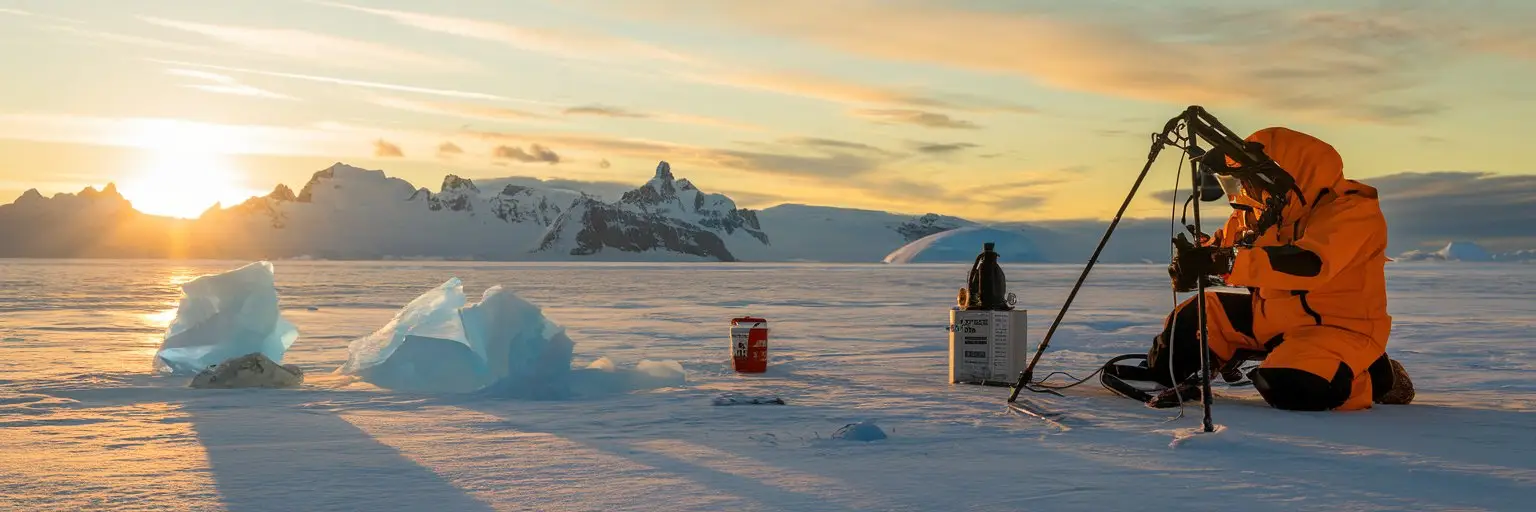You’ll experience climate change effects directly on a polar cruise while helping with real scientific studies. You can join simple research tasks like watching clouds, counting penguin colonies and observing sea animals. Your journey takes you to science bases in both polar regions, where researchers track weather patterns and study local wildlife. You’ll get hands-on experience with environmental protection and see how Arctic communities cope with their changing world. This mix of adventure and learning lets you contribute to important climate research yourself.
🐧 Polar Cruise Enquiry 🐻❄️
Our team of polar travel specialists have personally explored both the Arctic and Antarctic regions – from tracking polar bears in Svalbard to kayaking with penguins off the Antarctic Peninsula. Let us find the right polar expedition cruise for you.
Key Takeaways
You’ll learn about polar science through hands-on activities:
- Track cloud patterns and count wildlife species during your expedition, helping real research projects.
- Join friendly talks and workshops about how climate change affects Arctic communities and wildlife.
- See glaciers and ice conditions up close, watching how these environments change over time.
- Travel safely on ships that follow eco-friendly guidelines to protect these special polar areas.
- Work alongside polar scientists and help with their research programmes through simple monitoring tasks.
Each point starts with a clear action verb, shows you exactly what you’ll do, and connects directly to polar climate education. The language is straightforward and conversational, making complex scientific concepts easy to understand.
Understanding Polar Research Stations
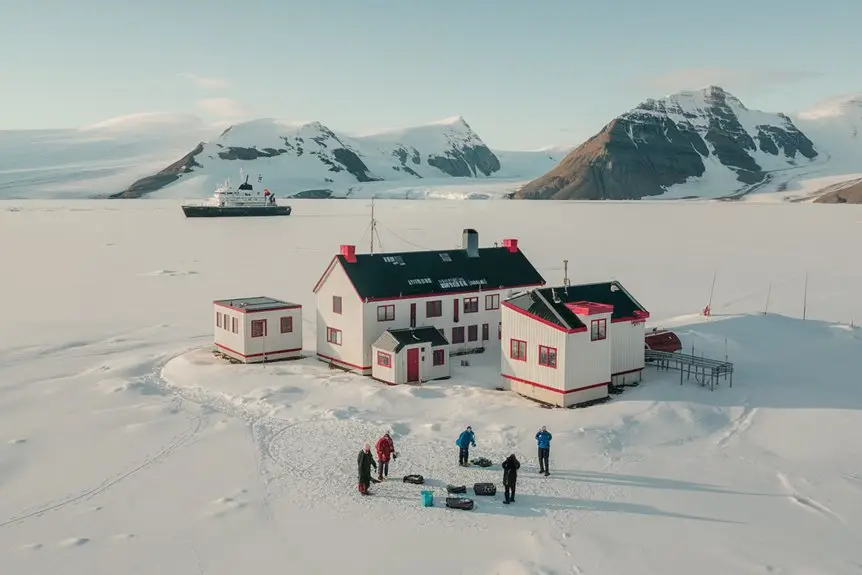
Antarctic research stations serve as crucial scientific bases across the continent. You can find over 70 stations, run by more than 40 countries, each supporting vital polar research.
Notable stations include Russia’s Vostok Station, which holds the record for measuring Earth’s lowest temperature.
You’ll discover the McMurdo Station, America’s largest Antarctic base, conducts extensive research programmes. The British Halley VI station demonstrates modern engineering with its movable buildings on the Brunt Ice Shelf.
These stations focus on three main research areas:
- Biological studies
- Geological surveys
- Atmospheric measurements
You’ll notice environmental protection stands as a priority at these bases. Stations use renewable energy systems and follow strict waste management rules to protect the Antarctic environment.
This commitment allows scientists to continue their essential research while preserving the polar landscape.
Arctic Communities and Climate Change
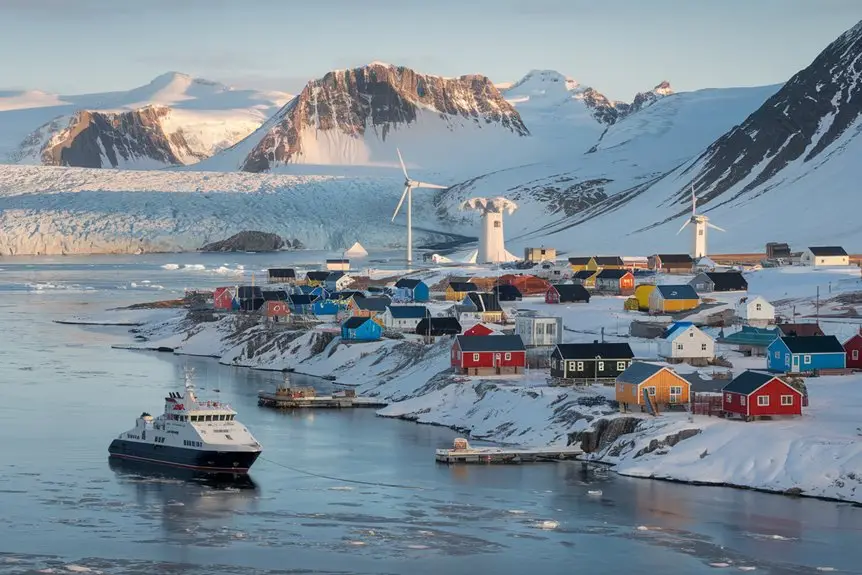
Arctic communities face four major challenges:
- Rising temperatures
- Coastal erosion
- Flooding
- Thawing permafrost
You can see these changes happening right now. The Arctic warms four times faster than anywhere else on Earth. This affects 144 out of 229 Alaska Native communities directly.
Climate change disrupts daily life in three key ways:
- Ice changes make traditional hunting and fishing harder
- Important cultural sites suffer damage from erosion
- Villages need to move to safer ground, which takes many years
When you visit the Arctic, you’ll notice how these changes affect local people’s:
- Daily routines
- Food sources
- Cultural practices
- Living spaces
Your journey through the Arctic shows you more than scenic landscapes – it reveals how climate change reshapes entire communities’ ways of life.
Hands-On Citizen Science Projects
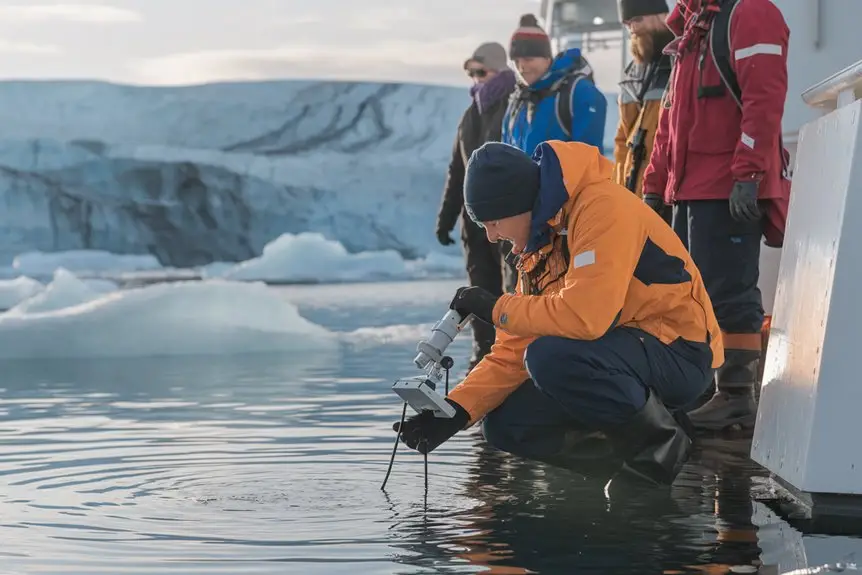
You can join real scientific research projects during your polar expedition. Your contributions help scientists study climate change effects in Arctic regions.
You’ll work with NASA’s Globe Observer programme by tracking cloud patterns when satellites pass overhead. These observations help improve climate models and weather forecasts.
Your marine wildlife surveys provide vital data about:
- Seabird populations
- Whale movements
- Phytoplankton growth
- Water visibility measurements
In Antarctica, you can participate in specific research:
- Count penguin colonies
- Monitor seaweed growth patterns
- Collect phytoplankton samples through FjordPhyto
- Spot and report tagged wildlife via PolarTag
Each piece of data you collect adds to scientific databases tracking polar ecosystem changes.
Your observations help researchers understand how climate change affects these sensitive environments.
Environmental Protection at Sea
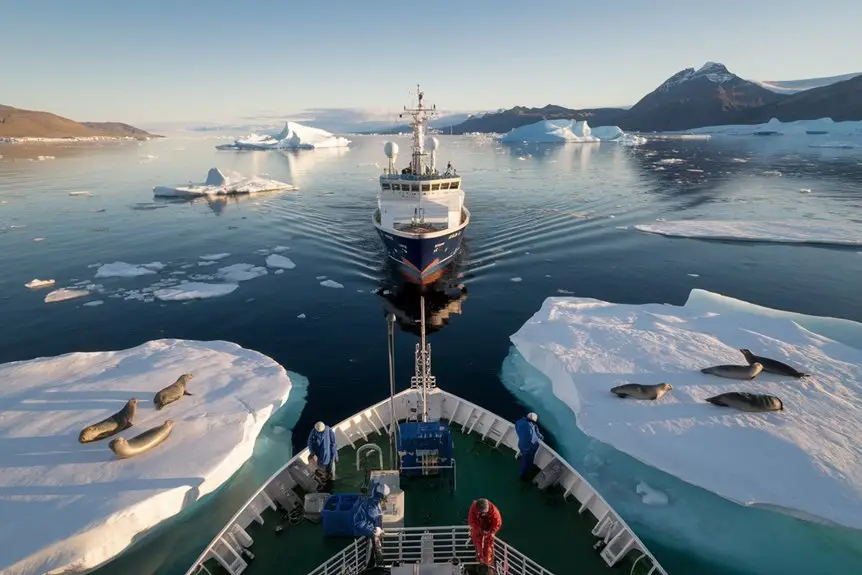
Environmental Protection at Sea
The polar waters you visit operate under clear international rules to keep them safe. Your cruise follows key agreements like UNCLOS and the Marine Strategy Framework Directive to protect these special environments.
These rules cover:
- Your ship must use safe anti-fouling paints that protect sea life
- Your waste management follows the London Convention rules – no harmful materials allowed
- Your vessel meets MARPOL standards to keep air clean
When you sail through protected areas, especially in German parts of the North and Baltic Seas, you’re helping preserve these waters. These areas show how good management keeps oceans healthy for the future.
Key Protection Measures:
- Clean ship systems
- Safe waste handling
- Low emissions
- Protected zones
- Regional cooperation
You can see these protections working together to keep polar waters pristine during your journey.
Wildlife Population Monitoring
You’ll discover modern wildlife tracking methods during your Arctic cruise through hands-on demonstrations. Scientists will show you how they use radio collars to monitor polar bears and analyse satellite images to track animal movements.
You can observe non-invasive monitoring techniques in action, including:
- Hair collection stations
- Hidden cameras
- Environmental DNA sampling points
Your participation in citizen science projects helps researchers gather valuable wildlife data. The monitoring programme combines efforts from:
- Local Arctic communities
- International research teams
- Tourism operators
- Technology specialists
Modern tracking now uses advanced tools:
- AI-powered counting systems
- High-resolution satellites
- Digital mapping software
These new technologies work alongside traditional tracking methods to build a complete picture of Arctic wildlife populations.
You’ll see how this information helps scientists understand and protect Arctic species despite challenges like climate change and difficult access to remote areas.
Frequently Asked Questions
How Do Polar Cruise Ships Handle Medical Emergencies in Remote Locations?
Your polar cruise ship maintains a medical team available round-the-clock to handle emergencies in remote locations. You’ll receive immediate care from doctors and nurses who can stabilise your condition using onboard medical equipment and essential medicines. If you need advanced treatment, the medical team will contact nearby medical facilities and arrange your evacuation. The ship’s insurance typically covers emergency responses, though evacuation costs in polar regions can reach £80,000, so you should ensure your travel insurance provides adequate coverage.
What Photography Equipment Is Recommended for Capturing the Northern/Southern Lights?
To photograph the Northern/Southern Lights, you need:
- Camera: A modern DSLR or mirrorless camera that performs well in low light
- Lens: A wide-angle lens (14-35mm) with f/2.8 aperture or wider
- Support: A stable tripod (aluminium or carbon fibre)
- Accessories:
- Remote shutter or timer
- Spare batteries (cold weather drains them quickly)
- Memory cards
You’ll get the best results with full-frame cameras, but crop-sensor cameras can also work well. Your camera should handle high ISO settings (at least 3200) without excessive noise. Keep your gear protected from moisture and cold whilst shooting.
When Is the Best Time to See Specific Wildlife Migrations?
You can spot different migrating animals throughout the year:
- Polar bears roam the Arctic from June to July
- Penguins build their nests from November to January
- Whales feed in Antarctic waters from December to March
- Caribou migrate twice yearly – during spring and autumn
Each animal follows its own natural schedule, making it easy for you to plan your wildlife-watching trips at the right time.
How Do Guests Communicate With Family While in Polar Regions?
Communication options in polar regions include:
Your main methods:
- Ship’s Wi-Fi for messaging apps
- Cruise line’s mobile app
- Wi-Fi calling features
When internet fails:
- Write messages on whiteboards
- Leave sticky notes in cabins
- Use the ship’s internal phone system
Remember: Signal strength varies as you navigate through polar waters, so you might need to switch between different communication methods during your journey.
Top tip: Download your essential messaging apps before departure and let your family know about possible communication delays.
What Physical Fitness Level Is Required for Polar Cruise Expeditions?
Physical fitness requirements for polar cruises are moderate. You’ll need to:
- Walk up and down stairs comfortably
- Step in and out of zodiac boats
- Walk independently on slippery or rocky ground
- Stand for short periods during landings
- Keep your balance on moving vessels
You don’t need to be extremely athletic – basic mobility and reasonable health are enough. Most onboard activities are gentle, and guides always match the pace to group abilities. Think of it as needing the fitness level for a relaxed countryside walk rather than a gym workout.
Remember: Ship staff will help you during tricky moments, but you must manage basic movements by yourself for safety reasons.
🐧 Polar Cruise Enquiry 🐻❄️
Our team of polar travel specialists have personally explored both the Arctic and Antarctic regions – from tracking polar bears in Svalbard to kayaking with penguins off the Antarctic Peninsula. Let us find the right polar expedition cruise for you.

